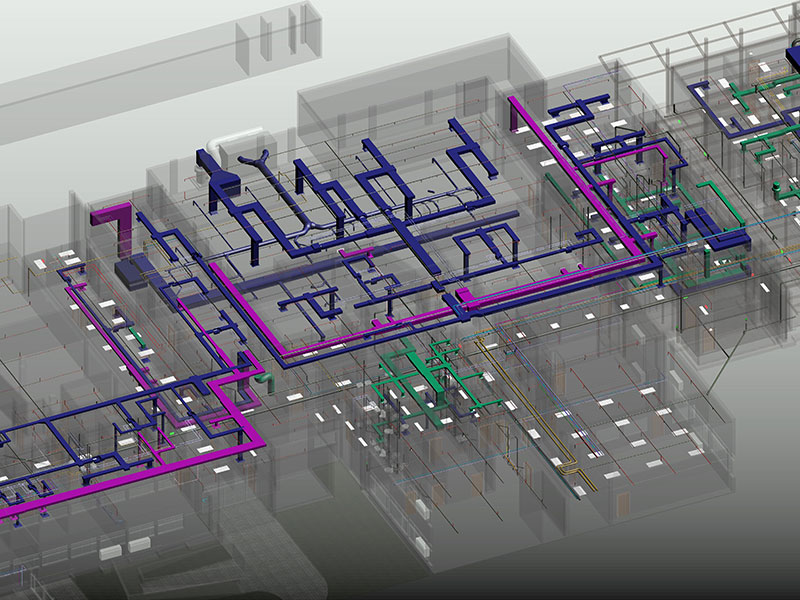The 10-Minute Rule for Partsolutions Adds Autodesk® Revit® 3d Bim Modeling …

Building information modeling (BIM) is a procedure supported by different tools, technologies and agreements involving the generation and management of digital representations of physical and practical characteristics of places.bim outsourcing services Building information models (BIMs) are computer files (often however not always in exclusive formats and consisting of proprietary information) which can be drawn out, exchanged or networked to support decision-making concerning a built property.
The concept of BIM has been in development because the 1970s, but it only ended up being a predetermined term in the early 2000s. building information modeling services. Advancement of standards and adoption of BIM has actually progressed at various speeds in different countries; requirements established in the United Kingdom from 2007 onwards have formed the basis of international standard ISO 19650, released in January 2019.
The very first software tools established for modelling structures emerged in the late 1970s and early 1980s, and consisted of workstation products such as Chuck Eastman’s Building Description System and SLIDE, RUCAPS, Sonata, Reflex and Gable 4D Series – building information modeling services. The early applications, and the hardware required to run them, were expensive, which limited widespread adoption.

The term ‘Building Information Model’ first appeared in a 1992 paper by G.A. van Nederveen and F. P. Tolman. However, the terms ‘Structure Info Design’ and ‘Building Details Modeling’ (consisting of the acronym “BIM”) did not end up being commonly used till some ten years later on – building information modeling services. In 2002, Autodesk launched a white paper entitled “Structure Details Modeling,” and other software suppliers likewise began to assert their involvement in the field.
Facilitating exchange and interoperability of details in digital format had formerly been offered under differing terminology by Graphisoft as “Virtual Structure”, Bentley Systems as “Integrated Job Designs”, and by Autodesk or Vectorworks as “Building Information Modeling”. The pioneering role of applications such as RUCAPS, Sonata and Reflex has been acknowledged by Laiserin along with the UK’s Royal Academy of Engineering.
These applications vary from architectural drafting tools such as AutoCAD by permitting the addition of more info (time, expense, manufacturers’ information, sustainability, and maintenance details, and so on) to the building model. As Graphisoft had been developing such services for longer than its rivals, Laiserin regarded its ArchiCAD application as then “one of the most mature BIM options on the market.” Following its launch in 1987, ArchiCAD became concerned by some as the very first execution of BIM, as it was the first CAD product on a desktop computer able to produce both 2D and 3D geometry, along with the first business BIM product for computers.
Not known Facts About 4 Reasons Bim Is Important – To Vercator.com
To achieve interoperability between applications, neutral, non-proprietary or open requirements for sharing BIM data amongst different software applications have been established. building information modeling services. Poor software application interoperability has actually long been considered a barrier to industry effectiveness in general and to BIM adoption in specific. In August 2004 an US National Institute of Standards and Technology (NIST) report conservatively estimated that $15.
capital centers industry due to inadequate interoperability occurring from “the highly fragmented nature of the market, the industry’s continued paper-based service practices, an absence of standardization, and irregular technology adoption among stakeholders”. An early BIM requirement was the CIMSteel Combination Requirement, CIS/2, an item model and information exchange file format for structural steel job details (CIMsteel: Computer Integrated Production of Constructional Steelwork).
It was established by the University of Leeds and the UK’s Steel Construction Institute in the late 1990s, with inputs from Georgia Tech, and was authorized by the American Institute of Steel Construction as its data exchange format for structural steel in 2000. BIM is typically connected with Industry Structure Classes (IFCs) and aecXML information structures for representing info established by buildingSMART (building information modeling services).
Building Operations Structure information exchange (COBie) is likewise connected with BIM. COBie was devised by Costs East of the United States Army Corps of Engineers in 2007, and assists capture and record equipment lists, item information sheets, guarantees, spare parts lists, and preventive maintenance schedules. This details is utilized to support operations, upkeep and asset management once a developed property is in service.
COBie has been integrated into software application, and may take a number of kinds including spreadsheet, IFC, and ifcXML. building information modeling services. In early 2013 BuildingSMART was dealing with a light-weight XML format, COBieLite, which appeared for review in April 2013. In September 2014, a code of practice relating to COBie was provided as a British Standard: BS 1192-4.
UK BS and PAS 1192 specifications form the basis of further parts of the ISO 19650 series, with parts on property management (Part 3) and security management (Part 5) released in 2020 – building information modeling services. The IEC/ISO 81346 series for referral classification has released 81346-12:2018, also referred to as RDS-CW (Referral Classification System for Building And Construction Functions).
